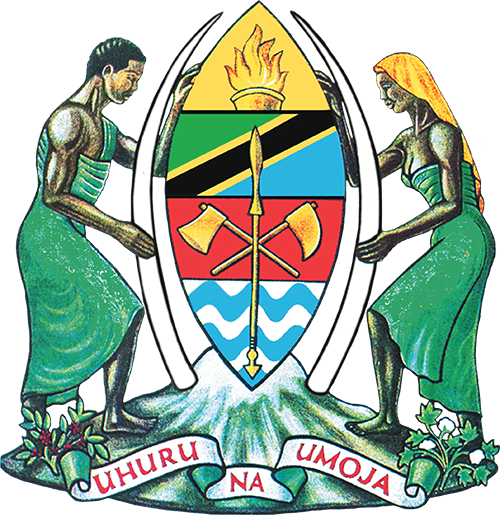CPA. Juma Ali SilayoDirector,Finance
About the Directorate
The Directorate of Finance at the University of Dar es Salaam (UDSM) is responsible for managing the financial resources of the university. It plays a crucial role in ensuring that the university’s financial operations are efficient, transparent, and in line with regulations and best practices.The Directorate of Finance at the University of Dar es Salaam (UDSM) is responsible for managing the financial resources of the university. It plays a crucial role in ensuring that the university’s financial operations are efficient, transparent, and in line with regulations and best practices. Here are some key functions and responsibilities typically handled by the Directorate of Finance:
- Financial Planning and Budgeting: o The Directorate prepares annual budgets, allocates funds for various departments, and ensures that the university’s financial goals align with its academic and administrative priorities.
- Financial Management and Reporting: o The Directorate monitors and controls the university's finances, ensuring proper allocation and expenditure of funds. o It generates financial statements and reports for internal and external stakeholders, including the government, regulatory bodies, and auditors.
- Accounting Services: o It provides accounting support across various departments, ensuring compliance with national and international accounting standards. o Manages the university’s accounts payable, receivables, and payroll systems.
- Treasury Management: o The Directorate is responsible for managing cash flow, investments, and ensuring that there is adequate funding for day-to-day operations and long-term strategic initiatives. o It also oversees the university's bank accounts and relationships with financial institutions.
- Procurement and Financial Control: o The Directorate ensures that procurement processes are conducted in a financially responsible and transparent manner, in line with the university's policies and national regulations.
- Audit and Compliance: o The Directorate ensures that the university's financial practices comply with statutory and regulatory requirements. o It works closely with external auditors to ensure transparency and accountability in the university’s financial dealings.
- Revenue Generation and Management: o The Directorate explores and manages revenue streams for the university, such as tuition fees, research funding, grants, and donations. o It also oversees the management of student fee collections and other related income.
- Financial Advisory Services: o The Directorate offers financial advice and training to university administrators and other departments to improve financial literacy and management across the institution.
The Directorate is a critical component in maintaining the financial health of the University of Dar es Salaam and supporting its long-term sustainability and growth. The Director of Finance is typically the head of this Directorate, overseeing its various functions and ensuring the effective execution of its responsibilities.
Sections under DF
- Responsible for maintaining the university’s general ledger, processing payments, and managing the university’s financial records.
- It includes tasks such as accounts payable, accounts receivable, and managing financial transactions within the university.
- Prepares periodic financial reports and statements, which include income statements, balance sheets, and cash flow statements.
- It analyzes the financial performance of the university and provides insights for decision-making by the university management.
- Responsible for processing salaries and wages for staff and faculty.
- Ensures that all deductions, such as taxes and social security contributions, are appropriately applied.
Manages the university's revenue streams, such as student’s fees, fine and penalties, government grants, research funds, donations, and other income-generating activities.
- This section plays a critical role in ensuring that financial activities and operations within the university comply with established policies, procedures, and regulations.
- The Inspection section is responsible for ensuring that financial transactions, procedures, and operations adhere to university policies, national financial regulations, and international accounting standards.
- It monitors the implementation of financial controls and ensures that proper financial records are maintained.
This section is responsible for managing and overseeing the university’s expenditure activities. This section plays a crucial role in ensuring that the university's financial resources are spent appropriately and in accordance with institutional policies and national financial regulations.
Key Functions of the Expenditure Section
- Processing and Approving Payments:
- The Expenditure Section is responsible for processing all payments related to university expenses, including payments to suppliers, contractors, and service providers.
- This includes reviewing invoices, ensuring they are accurate, and processing payments through the university's financial system. - Budget Monitoring and Control:
- The section ensures that expenditures align with the approved budget and financial plans of the university.
- It monitors spending across different departments, ensuring that the university does not exceed its budget allocations, and helps to identify any over-expenditure or financial gaps. - Procurement Payments:
- The Expenditure Section works closely with the Procurement Section to process payments related to goods and services that the university has acquired.
- It ensures that payments are made according to the agreed terms and within the proper financial controls established by the university. - Vendor and Supplier Management:
- The section ensures that payments to vendors and suppliers are made promptly and that any issues with suppliers are resolved in a timely manner.
- It also helps maintain good financial relationships with external vendors by ensuring timely and accurate financial transactions. - Financial Documentation and Record Keeping:
- The Expenditure Section ensures that all expenditure-related documents, such as receipts, payment vouchers, invoices, and contracts, are properly filed and maintained for auditing and future reference.
- These records are crucial for transparency and accountability in the university’s financial activities.
This is responsible for the management, tracking, and safeguarding of the university’s fixed assets. Fixed assets are long-term assets that are used in the operations of the university, such as buildings, land, equipment, vehicles, and furniture. This section plays a critical role in ensuring that the university’s assets are properly accounted for, maintained, and safeguarded. Below are the key functions and responsibilities of the Fixed Asset Section
Key Functions of the Fixed Asset Section
- Asset Registration and Documentation:
- The section is responsible for maintaining a comprehensive and up-to-date register of all fixed assets owned by the university.
- This includes assigning unique identification numbers to assets and documenting detailed information such as asset descriptions, purchase dates, cost, location, and condition. - Asset Tagging and Tracking:
- The Fixed Asset Section ensures that each asset is tagged with an identification number or barcode for tracking purposes.
- Regular asset audits and physical verification are conducted to ensure that the assets listed in the records correspond to actual items on the ground. - Acquisition and Disposal of Assets:
- The section handles the financial recording of all asset acquisitions, ensuring that purchased assets are properly classified and recorded in the financial system.
- It also manages the process of asset disposal, ensuring that any assets that are obsolete, damaged, or no longer needed are disposed of in accordance with university policies and national regulations. - Depreciation Management:
- The Fixed Asset Section is responsible for calculating and recording the depreciation of assets over time, based on the asset's useful life.
- Depreciation is an essential part of asset management, as it reflects the reduction in the value of the asset due to usage and wear over time.
- The section ensures that depreciation is correctly applied to the university’s financial statements. - Asset Maintenance and Repairs:
- The section monitors the condition of fixed assets and ensures that they are maintained in good working order.
- This may involve coordinating repairs, servicing, and regular maintenance of assets such as vehicles, laboratory equipment, and buildings. - Inventory Management:
- The Fixed Asset Section maintains an accurate inventory of all physical assets to ensure that no asset is lost or misused.
- This involves conducting periodic physical counts of assets and reconciling these counts with the financial records.
- It works closely with departments to ensure proper documentation of any movement or transfer of assets between different units or locations. - Reporting and Financial Statements:
- The section provides regular reports on the status of fixed assets, including their value, depreciation, and any changes in asset ownership or condition.
- These reports are used in the preparation of the university’s financial statements, including the balance sheet, which reflects the value of the assets owned by the university. - Compliance and Internal Controls:
- The section ensures that the university complies with applicable regulations and policies regarding the management of fixed assets, including national laws on asset management, tax laws, and auditing standards.
- It works with the university’s internal and external auditors to ensure that the fixed asset records are accurate, complete, and in compliance with legal requirements. - Asset Revaluation:
- If necessary, the section may be involved in the revaluation of assets to ensure their value is properly reflected in the financial records, especially for significant assets like real estate and land.
- Revaluation is done periodically based on market conditions and accounting standards. - Asset Security and Safeguarding:
- The section works to ensure that all fixed assets are properly safeguarded against theft, loss, or damage.
- This may involve implementing security measures such as controlled access to facilities, ensuring that sensitive or high-value assets are securely stored or locked, and monitoring asset usage.


